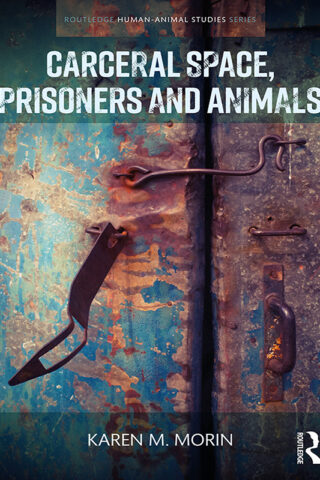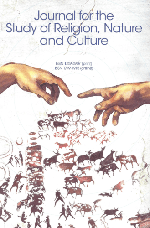New Articles from Carol Wayne White
We’re excited to share some new publications from ISSRNC Board Member and scholar Carol Wayne White. Dr. White is the Presidential Professor of Philosophy of Religion (2018-2021) in the Religious Studies Department of Bucknell University. These publications cover a range of thematic issue of interest to ISSRNC members, and engage with many pressing social concerns. Be sure to check them all out and share with your colleagues and students.
 “Black Lives Matter and the New Materialism: Past Truths, Present Struggles, and Future Promises.” In Race, Religion, and Black Lives Matter: Essays on a Moment and a Movement. Edited by Christopher Cameron and Luke Sinitere. Nashville, TN: Vanderbilt UP, 2021: 89-124. Publisher page for book.
“Black Lives Matter and the New Materialism: Past Truths, Present Struggles, and Future Promises.” In Race, Religion, and Black Lives Matter: Essays on a Moment and a Movement. Edited by Christopher Cameron and Luke Sinitere. Nashville, TN: Vanderbilt UP, 2021: 89-124. Publisher page for book.
About this book:
This volume has a simple, but far-reaching argument: religion is an important thread in BLM. To advance this claim, Race, Religion, and Black Lives Matter examines religion’s place in the movement through the lenses of history, politics, and culture. While this collection is not exhaustive or comprehensive in its coverage of religion and BLM, it selectively anthologizes unique aspects of Black religious history, thought, and culture in relation to political struggle in the contemporary era. The chapters aim to document historical change in light of current trends and current events. The contributors analyze religion and BLM in a current historical moment fraught with aggressive, fascist, authoritarian tendencies and one shaped by profound ingenuity, creativity, and insightful perspectives on Black history and culture.
“Religious Naturalisms.” In Bloomsbury Religion in North America. London: Bloomsbury Academic, 2021. http://dx.doi.org/10.5040/
About this article:
This article focuses on recent developments in religious naturalism in the twenty-first century, building on Jerome Stone’s 2008 study of its resurgence in the mid-twentieth century. I introduce religious naturalism as a synthesis of naturalistic ideas that often depart from traditional forms of religious thinking, defining it as a capacious, ecological religious worldview grounded in the observational conviction that nature is ultimate. I also describe different models of religious naturalism, focusing on the key ideas found in the influential publications of contemporary religious naturalists (e.g., Ursula Goodenough, Donald Crosby, Loyal Rue, among others). While acknowledging specific points of emphasis, I also feature shared perspectives among these thinkers, including the rejection of traditional supernaturalism, a challenge to the ontological and epistemic exceptionalisms that have set humans over and against other forms of animal life, as well as against the ecological systems upon which they depend. These insights show religious naturalists reflecting meaningfully on the emergence of matter (and especially life) from the Big Bang forward, and promoting an understanding of myriad nature as complex processes of becoming, including human beings. As a collective, these influential writings show the interdisciplinary nature of religious naturalism, specifically illuminating its unique focus in integrating scientific knowledge with religious meaning and valuing. A final section features a younger generation of religious naturalists who focus on the social, ethical, and political implications of religious naturalism in applying its tenets to such topics as racism, eco-injustice, and democratic valuing in the Anthropocene era.

“The Process of Animalization, Human Exceptionalism, and The Racialization of Myriad Nature: A Response from Religious Naturalism.” Essay Contribution to Symposium on Karen M. Morin’s Carceral Space, Prisoners and Animals. Syndicate Network, July 2021. https://syndicate.network/
About this publication:
As a book that brings carceral geography together with animal studies, Carceral Space is also a concrete examination of the processes and practices by which “animalization” occurs. From zoos, laboratories, and slaughterhouses to prisons and death row, each chapter brings us into the spatial, operational, embodied, and relational dynamics by which nonhuman and human animals alike are turned into objects or commodities or so-called “criminals.” Each participant in this symposium engages with these questions directly, extending the book’s central thesis in a range of transdisciplinary directions. Carol Wayne White brings an additional set of methods and questions into the conversation, inviting us to think about the interplay between materialist and naturalist presumptions in carceral and anti-carceral thinking. More specifically, White draws attention to the racialization of “nature” itself, in the form of systems of classification and hierarchy that sustain the exceptionalism of carceral spaces. Religious naturalism, on White’s intervention, becomes a rich resource for redressing and refuting such exceptionalist logics and practices. The stakes of such analysis are tremendous, given what we learn from Morin’s book—namely, that human and nonhuman captivity and disposability take place within many regimes of violence, including the prison, medical, and agricultural industrial complexes.
If you are an ISSRNC scholar with newly published research, please let us know so we can feature your work on our website and social media.












